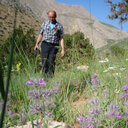Antiplasmodial and antitrypanosomal activity of tanshinone-type diterpenoids from Salvia miltiorrhiza.
Mots clés
Abstrait
In a medium throughput screen of 880 plant and fungal extracts for antiprotozoal activity, a dichloromethane extract of Salvia miltiorrhiza roots was active against both Trypanosoma brucei rhodesiense and Plasmodium falciparum. With HPLC-based activity profiling in combination with on- and off-line spectroscopic methods (PDA, -MS (n), HR-MS, microprobe NMR), the active compounds were identified as tanshinone-type diterpenoids. Subsequent isolation and structure elucidation yielded the known substances miltirone (1), tanshinone II a (2), 1,2 dihydrotanshinquinone (3), methylenetanshinquinone (4), 1-oxomiltirone (5), 11-hydroxymiltiodiol (6), tanshinone I (7), methyltanshinonate (8), and cryptotanshinone (9). The IC₅₀s of the compounds were determined against the two parasites and rat myoblast (L6) cells. They ranged from 4.1 µM to over 30 µM against P. falciparum K1 strain with selectivity indices (SI) from 0.3 to 1.9. IC₅₀s against T. brucei rhodesiense STIB 900 were from 0.5 µM (1, 4) to over 30 µM, and 4 showed the greatest selective activity with an SI of 24.


